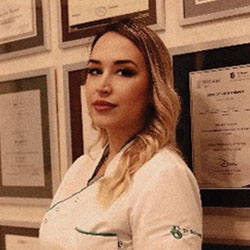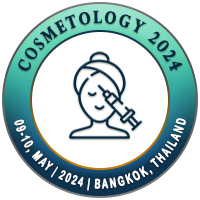
Nina Micic
Plastic surgery resident, SerbiaTitle: Clinical case presentation of solving hypertrophic and atrophic acne scars by using collagen, radiofrequency microneedling and radiofrequency surgery knife
Abstract
Clinical case presentation of solving hypertrophic and atrophic acne scars by using collagen, radiofrequency microneedling and radiofrequency surgery knife.
Introduction: After healing acnes skin there remain scars and they represent an equally serious problem as acnes. Inflammatory process can leave atrophic scars which include boxcar, rolling and ice pack, but the skin can also produce hypertrophic scars or keloids. Dealing with acne scars problems can also improve mental health and quality of life. Based on our experience the new protocol has been created with the aim to improve skin quality and texture and to minimize acne scars.
Case presentation: This case presents a very difficult male patient, 31 years old with a severe acne problems and post-acne scars. In order to prevent the further spread of inflammatory processes and to stop the process of uncontrolled secretion of sebum, Isotretinoin was included as ,,per os” therapy for six months. This patient had on his right side in lower third of face big hypertrophic scar which appeared after abscess as a result of untreated acne problem. On the left side the patient had a few hypertrophic scars and on both sides of the face there were atrophic scars.
Discussion: After six months of Isotretinoin oral therapy acnes were totally cured. Problem of inflammation was solved so there appeared the opportunity to continue the rejuvenation of the skin and process of solving acne scars. Atrophic acne scars were treated by using injectable collagen.
Three sessions of injectable collagen were performed. In the meantime radiofrequency microneedling treatments with 2mm deep needles were also performed three times . The protocol was that the treatments were repeated every two weeks, alternatively, started from radiofrequency microndeedling and continued with injectable collagen two weeks later.
This protocol was formed in order to improve skin quality, achieve better hydration and reduce acne scars.
In order to get smooth skin texture without any prominences and irregularities of the hypertrophic scars radiofrequency surgery knife was included. Hypertrophic scars were removed by using RF knife. Additionally due to the depression of tissue, PRP treatment was applied so as to compensate collagen and tissue in a natural way.
Conclusion: Satisfactory results were achieved by the Protocol of combining radiofrequency microneedling and injectable collagen. Acne scars were minimized and skin texture was significantly improved.
Biography
Nina Mićić is a Plastic Surgery resident on the 4th year. She completed practical part of specialization as a Clinical doctor at the Clinical Center of Serbia for two years in General surgery. Now she specializes at the department of Burns at Clinical Center of Serbia and she is permanently employed in the private Dermatologist practice ,,Dr Babovic” in Belgrade in Serbia. She acquired Worldwide recognized Certificate for Hair transplantation in Turkey (Natural Academy, Istanbul) in 2021. During the specialisation she has been working as a Plastic surgery Assistant and thus being involved in various spheres of Plastic Surgery. Part of her job includes practising aesthetic and anti aging medicine on a daily basis. She has become a member of Euroresearch Medical team and on behalf of it she performed many presentations and workshops. She regularly takes part in International Congresses and she is dedicated to improving, expanding and sharing her knowledge.

